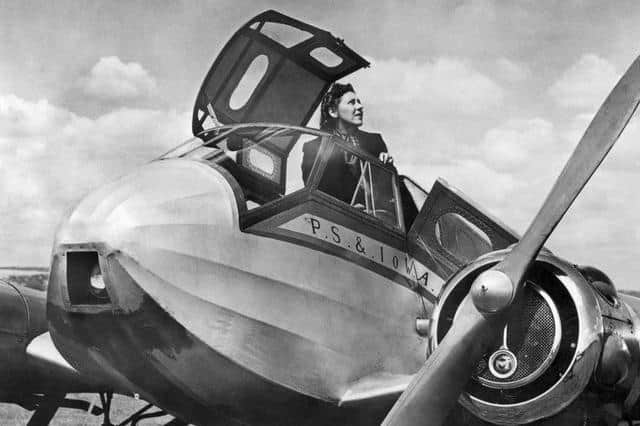1921 census: Teenage lives of Yorkshire icons Amy Johnson, Barbara Hepworth and Henry Moore revealed
But the release of the 1921 census offers a glimpse into the lives of Hull pilot Amy Johnson and West Yorkshire sculptors Barbara Hepworth and Henry Moore - before anyone knew just how famous they would become.
Some 38 million records from the census were released by the National Archives earlier this week and are available for the public to digest on genealogy website FindMyPast.
Advertisement
Hide AdAdvertisement
Hide AdThey create a picture of citizens of England and Wales coping in the aftermath of both the First World War and the Spanish Flu pandemic.


Among the records is one for the Johnson family who lived at 85 Park Avenue in Sculcoates, Hull.
Fish salesman John Johnson and his wife Amy lived at the house with their four daughters, one of whom, also named Amy, was listed as a 17-year-old full time student.
Just eight years after the census was taken, Amy flew for the first time, and in 1930 she became the first woman to fly solo from England to Australia, before disappearing after her plane crashed into the Thames Estuary in 1941.
Advertisement
Hide AdAdvertisement
Hide AdSome 60 miles away, at 1 Hawthorne Grove in Alverthorpe, Herbert Hepworth filled in the census on behalf of his wife Gertrude and their four children, the oldest of whom was Jocelyn Barbara, who was 18 and listed as a full-time student. She was then studying at the Leeds School of Art, which she attended for a year before being given a scholarship to the Royal College of Art in London later that year.
She later became one of the most celebrated sculptors in British history, alongside her contemporary Henry Moore, who was living at the time of the census at 37 Briggs Field, Glass Houghton, near Castleford with his father, a retired coal miner, his mother and his older sister Mary, a teacher.
Aged 20 at the time of the census, he was also listed as a full-time student at Leeds School of Art.
Meanwhile, the aristocratic owners of Yorkshire's iconic stately homes were largely away from home, as the census was taken in the midst of the London season.
Advertisement
Hide AdAdvertisement
Hide AdThe census will act as a key document for historic research for decades, according to University of Birmingham lecturer Michala Hulme (sp correct), who specialises in public history.
Unlike previous years, people were also able to declare their marital status as "divorced", with more than 16,000 people doing so.
However, this figure is expected to be much lower than the actual number due to the stigma surrounding divorce at the time.
Dr Hulme said: “What’s really key about this census is that it’s coming in a period of real change.
Advertisement
Hide AdAdvertisement
Hide Ad“There’s the aftermath of World War One, and we’ve also got the impact of the pandemic, which affects population statistics.
“I’ve been surprised at how many of my family were out of work during this census.
“We often think that when the war finished, we went back to how things were.
“It’s interesting to see the effects of the war - it pushed divorce rates up.”
Advertisement
Hide AdAdvertisement
Hide Ad"In the 1920s, we do start to see some American culture seeping through with Hollywood films, and women are the most liberated they'd ever been - but behind the flappers, people were struggling. Men were at home struggling with PTSD. We need to look past the shiny, happy 1920s, and see the real underbelly of hardship and struggle."
